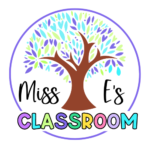
- In the realm of language education, acronyms like ELL (English Language Learners) and ESOL (English for Speakers of Other Languages) are commonly used, but they can sometimes be confusing. Understanding the distinctions between these terms and the learners they describe is crucial for educators aiming to provide effective instruction. This post delves into the history, differences, and teaching approaches for ELL and ESOL learners.
Acronyms and Definitions:
- ELL (English Language Learners): This term refers to students who are learning English in addition to their native language. It is often used in the context of K-12 education in English-speaking countries.
- ESOL (English for Speakers of Other Languages): This term encompasses a broader range of learners, including those learning English in non-English-speaking countries. It is often used in adult education and community programs.
The need for specialized English language instruction has grown alongside globalization and increased migration. The terms ELL and ESOL emerged to categorize and address the specific needs of learners in different contexts. ELL is more commonly used in the United States, whereas ESOL is widely recognized in other countries.
Key Differences:
- Context and Setting:
ELL: Typically used in primary and secondary education within English-speaking countries. These learners are often integrated into mainstream classrooms with additional support.
ESOL: Often associated with programs, community colleges, and international settings where English is not the primary language.
- Learner Demographics:
ELL: Primarily children and teenagers who are learning English as part of their formal education.
ESOL: Includes kids, adults and young adults learning English for various purposes such as studies, work, travel, or personal enrichment.
- Instructional Goals:
ELL: Focuses on academic language proficiency to succeed in school subjects.
ESOL: It may emphasize practical language skills for everyday communication and specific purposes like university, business, or travel.
Teaching Approaches:
For ELL Learners:
- Sheltered Instruction: Integrates language development with content instruction, using strategies like visual aids, simplified language, and scaffolding to make content accessible.
- Content-Based Instruction: Language is taught through subject matter, helping students acquire both language and academic skills.
- Total Physical Response (TPR): Uses physical movement to reinforce language concepts, which is especially effective for younger learners.
For ESOL Learners:
- Communicative Language Teaching (CLT): Focuses on interaction as the primary means of language learning, emphasizing real-life communication skills.
- Task-Based Language Teaching (TBLT): Involves learners in meaningful tasks that reflect real-world language use, promoting practical language application.
- Language Experience Approach (LEA): Uses learners’ personal experiences as the basis for language activities, making learning relevant and engaging.
While ELL and ESOL learners may share the common goal of learning English, their contexts, needs, and instructional approaches can differ significantly. By understanding these differences, educators can tailor their teaching methods to better support each group, ensuring a more effective and enriching language learning experience. Whether teaching children in a school setting or adults in a community class, the key is to adapt to the learners’ needs and create an inclusive and supportive environment.
There’s a wide variety of lessons DONE-FOR-You for your specific needs where you can look up in detail to adapt to your teaching needs here. Click the button and see it for yourself.


